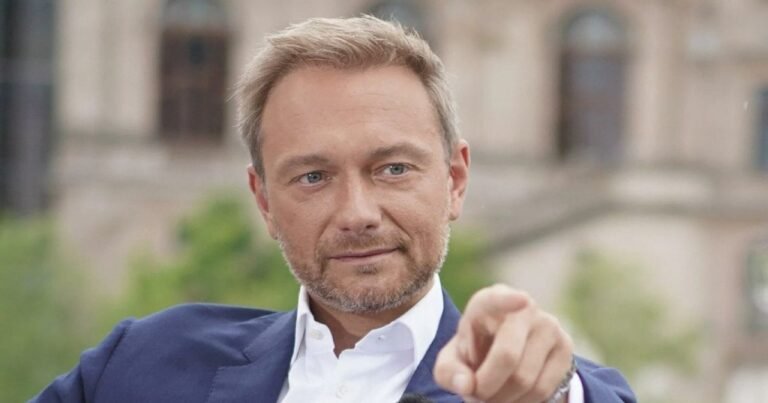Pedro Vaz Paulo is a name synonymous with creativity and innovation in the world of contemporary art. His thought-provoking quotes not only reflect his artistic philosophy but also provide insight into the evolving landscape of art today.
In this article, we will explore 15 of his most impactful quotes, focusing on key themes such as emotion, societal reflection, simplicity, collaboration, timelessness, personal journeys, and cultural diversity. Each section will delve into how these themes resonate within contemporary art and inspire both artists and audiences alike.
The Role of Emotion in Art
Emotional Expression in Contemporary Art
One of Pedro Vaz Paulo’s most famous quotes is: “True art is born from the depths of emotion.” This statement encapsulates the essence of emotional engagement in art. Today, artists increasingly draw from personal and shared experiences to evoke strong feelings in their audiences.
Case Studies of Contemporary Artists
- Tracey Emin: Known for her confessional style, Emin’s works often reflect her personal traumas and experiences, such as in her installation “My Bed,” which portrays vulnerability and intimacy.
- Kara Walker: Her silhouettes address complex themes of race, gender, and history, inviting viewers to confront uncomfortable truths through powerful emotional narratives.
The Science of Emotion and Art
Research indicates that emotional engagement can significantly enhance audience connection. A study by the University of California, Berkeley, found that art that evokes strong emotions tends to be more memorable and impactful for viewers. This aligns with Vaz Paulo’s belief that art requires an emotional foundation to resonate deeply.
Art as a Mirror of Society
Reflecting Social Issues Through Art
Vaz Paulo’s quote, “An artist holds a mirror to the world,” highlights the role of art in reflecting societal truths. Contemporary artists utilize their platforms to address pressing social issues, sparking dialogue and awareness.
Examples of Contemporary Artists Addressing Social Issues
- Banksy: His street art often critiques consumerism and war, prompting viewers to question societal norms.
- Ai Weiwei: Known for his activism, Ai’s work challenges government censorship and advocates for human rights, exemplifying art’s power as a tool for social change.
Art’s Role in Social Change
Historically, art has been a catalyst for social movements. From the Harlem Renaissance to the feminist art movement, artists have used their work to challenge the status quo. Today, art continues to play a vital role in activism, with many contemporary pieces designed to provoke thought and inspire action.
Innovation Through Simplicity
The Philosophy of Simplicity in Art
Vaz Paulo once stated, “Simplicity in art is not the absence of complexity, but the mastery of it.” This philosophy resonates with many contemporary artists who embrace minimalism as a way to communicate powerful messages through understated forms.
Minimalist vs. Complex Artworks
- Minimalism: Artists like Donald Judd and Yayoi Kusama use simplicity to focus on the essence of their work, stripping away distractions to highlight form and color.
- Complex Art: In contrast, artists such as Damien Hirst create intricate pieces that challenge viewers to engage with layered meanings.
Case Studies of Minimalist Artists
- Donald Judd: His geometric sculptures exemplify how minimalism can evoke strong emotional responses through form.
- Yayoi Kusama: Known for her immersive installations, Kusama’s use of repetition and color creates an emotional experience that captivates audiences.
Collaboration and Artistic Development
The Importance of Artistic Collaboration
Vaz Paulo emphasized the power of collaboration with his quote, “Art grows when minds meet and ideas collide.” In today’s artistic landscape, collaboration is becoming increasingly vital, allowing artists to merge different disciplines and perspectives.
Benefits of Collaborative Projects
- Innovation: Collaborative endeavors often lead to new ideas and techniques, pushing the boundaries of traditional art forms.
- Community Building: Working together fosters a sense of community among artists, encouraging mutual support and shared learning.
Multidisciplinary Approaches
Many contemporary artists are breaking down barriers by collaborating across fields. For example:
- Theaster Gates: His work combines visual art, music, and community development, creating spaces that foster dialogue and cultural exchange.
- Ryoji Ikeda: Known for his sound and visual installations, Ikeda collaborates with scientists and technologists to explore the relationship between art and data.
The Timelessness of Art
Art in the Digital Age
Vaz Paulo’s quote, “Art is timeless; it exists as long as it is viewed,” resonates particularly in the context of the digital age. With the rise of online platforms, art can now reach global audiences in real-time.
How Digital Platforms Transform Art Accessibility
- Increased Reach: Artists can share their work with a worldwide audience, transcending geographical limitations.
- Preservation: Digital archives allow artworks to be preserved and appreciated by future generations.
The Enduring Appeal of Art
Certain artworks maintain their relevance across generations. For instance, Van Gogh’s “Starry Night” continues to captivate audiences with its emotional depth and innovative style. Contemporary artists often aim to create pieces that resonate with timeless themes, ensuring their work remains impactful.
Art as a Personal Voyage
Personal Narratives in Art
Vaz Paulo’s belief that “Every stroke, every shade, is a chapter of the artist’s story” highlights the personal nature of artistic expression. Many contemporary artists draw from their own experiences to create meaningful work.
Profiles of Artists Using Personal Experiences
- Frida Kahlo: Her paintings explore her identity, pain, and cultural heritage, making her work deeply personal and universally relatable.
- Yoko Ono: Through her art, Ono addresses themes of peace, feminism, and personal struggle, inviting viewers into her journey.
The Therapeutic Aspect of Art
Art serves as a powerful tool for self-discovery and healing. Studies show that engaging in artistic activities can reduce stress and improve mental health. For many artists, creating art is a form of catharsis, allowing them to process their experiences and emotions.
Promoting the Next Generation
Inspiring Future Artists
Vaz Paulo’s assertion that “Creativity belongs to those who dare to see the world differently” underscores the importance of nurturing young talent. Art schools and programs are increasingly focusing on fostering creativity and individual expression.
Initiatives Encouraging Young Artists
- Youth Art Programs: Organizations like Young Audiences provide arts education and mentorship to young creatives.
- Art Competitions: Events such as the Scholastic Art & Writing Awards recognize and celebrate emerging talent.
Educational Models in Art Schools
Many art institutions have begun integrating Vaz Paulo’s philosophies into their curricula. By encouraging collaboration, emotional engagement, and personal expression, these programs prepare students to navigate the complexities of the contemporary art world.
The Impact on Contemporary Art Movements
Key Movements Influenced by Vaz Paulo
Pedro Vaz Paulo’s concepts have left a lasting mark on various contemporary art movements, including:
- Abstract Expressionism: Artists like Jackson Pollock and Mark Rothko embraced emotional expression and spontaneity, aligning with Vaz Paulo’s emphasis on the emotional depth of art.
- Digital Art: The rise of technology in art creation has allowed for innovative experimentation, echoing Vaz Paulo’s advocacy for exploration.
Reversing Traditional Standards
Contemporary artists are increasingly challenging traditional artistic conventions. This rebellion against established norms fosters a dynamic and ever-evolving art scene. For instance:
- Artists like Jenny Holzer use text in public spaces to engage viewers in critical conversations.
- Marina Abramović employs performance art to explore the boundaries between artist and audience, redefining artistic interaction.
Embracing Cultural Diversity
The Influence of Culture on Art
Vaz Paulo stated, “Every culture brings its own colors to the canvas of humanity,” emphasizing the importance of cultural diversity in art. Today, artists draw inspiration from their cultural backgrounds, enriching the global art narrative.
How Cross-Cultural Influences Enrich Contemporary Art
- Globalization: The interconnectedness of cultures has led to a blending of artistic practices, fostering innovation and collaboration.
- Cultural Representation: Artists from diverse backgrounds ensure their voices are heard, contributing to a richer, more inclusive art world.
Celebrating Diverse Voices
Contemporary art is increasingly recognizing and celebrating diverse perspectives. Notable artists include:
- Yayoi Kusama: Her work reflects her Japanese heritage, exploring themes of infinity and self-identity.
- El Anatsui: The Ghanaian artist incorporates traditional African techniques and materials into his work, challenging Western notions of art.
Conclusion
The timeless value of Pedro Vaz Paulo’s quotes continues to shape the world of contemporary art. His insights into emotion, simplicity, collaboration, and social reflection serve as guiding principles for artists today. By embracing his philosophies, contemporary creators fulfill their role in a constantly evolving art landscape that respects human experience and challenges perceptions.
As we navigate this dynamic world of art—through edgy paintings, immersive installations, or socially relevant murals—the spirit of Pedro Vaz Paulo persists, inspiring us to engage with art on a deeper level. Whether you’re an aspiring artist or an avid art lover, let his words guide you in exploring the transformative power of creativity.
Additional Resources
- Interviews: Explore interviews with contemporary artists discussing Vaz Paulo’s influence.
- Documentaries: Watch documentaries that highlight the evolution of contemporary art.
- Suggested Reading: Dive deeper into emotional engagement in art and the impact of cultural diversity.








